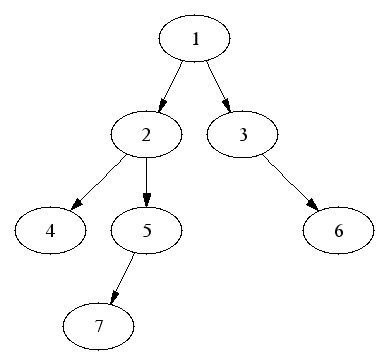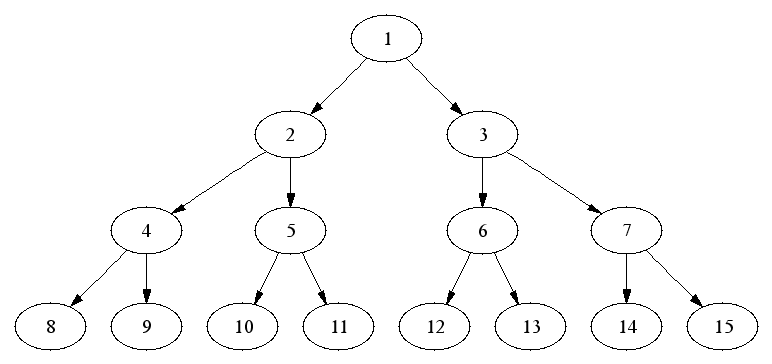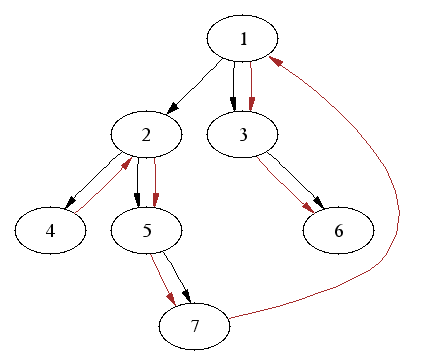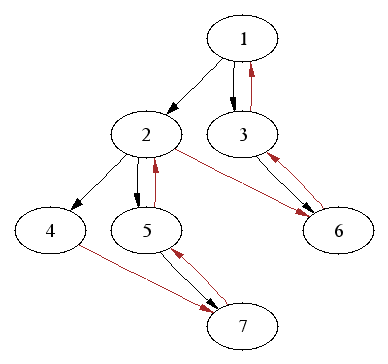
The Department of Computer Science & Engineering
|
|
STUART C. SHAPIRO: CSE
116 B
|

 |
If the root is at level 0: each level, d contains 2d nodes; a tree of height h contains 2h+1-1 nodes. In binary:
|




Pseudocode evaluator of postfix expressions:
int postfixEvaluator(TokenStream stream) {
Stack stack;
Token token;
while (stream.hasNext()) {
token = stream.next();
if (token instanceof int) stack.push(token);
else { // token is an operator
opnd2 = stack.pop();
opnd1 = stack.pop();
stack.push(apply(token, opnd1, opnd2));
}
}
return stack.top();
}